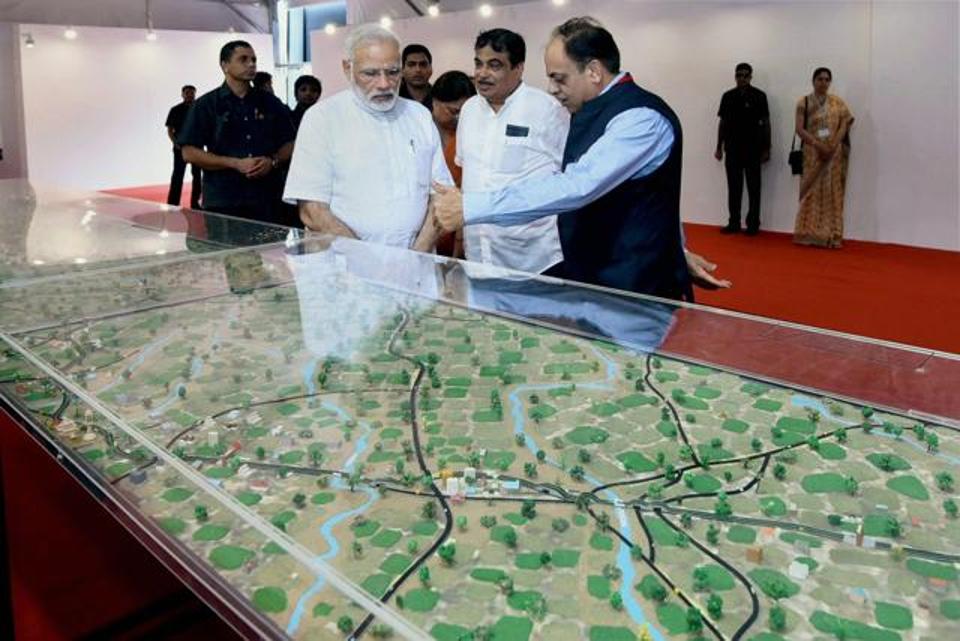Even today, Some town and villages in India don’t have proper connectivity, because of which it becomes impossible to reach out to these far flung places especially in times of emergency like situations. The role of roads in the economic and social development of a country is paramount. A road is not just a layering of asphalt and concrete, but it is a dimension of development, employment and business for the areas it passes through and connects.
First NDA government, led by former Prime Minister Atal Bihari Bajpayee, had pledged to make road journey easier by connecting every corner of the country under the “Golden Quadrilateral” project. Taking Vajpayee’s dream forward, the Union Cabinet of the Modi Government has approved the Mammoth” Bharatmala project ” for road construction so as to give this country an efficient and accessible transport system.
What is Bharatmala Project?
Bharatmala Project is a comprehensive road project to connect the various nerve points of the country as well as the passages to the outside world. Under the Bharatmala Project, thousands of kilometers of roads will be constructed for connecting borders, coastal areas, ports, religious and tourist sites along with establishing international connectivity. In this scheme, those roadway schemes will be selected first which are incomplete or pending, which is to say those roads whose construction was not completed or the construction work was stopped for some or the other reason.
Some important points:
- This is the first project which would connect Eastern India with Western India, It will also include road construction alongside the border with China.
- The famous Char Dhams of Hindus will be connected by road.
- All the ports and coastal areas under the Sagarmala project will be linked by road for better connectivity.
- This huge project will generate new employment opportunities.
Types of Roads in kilometres:
Economic Corridor ———- 9,000
Cross corridor and feeder route ———- 6,000
National Corridor Efficiency Program ———- 5,000
Border and International Connectivity ———- 2,000
Coastal and harbor connections ———- 2,000
Green Field Expressway ———800
Total construction under the Bharatmala project ———- 24,800
The remaining national highways under NHDP ———- 10,000
Total developed roads by the end of first phase ———- 34,800
About 7 to 10 lakh crore expenditure is expected on this ambitious project which will connect the states of Rajasthan, Punjab, Jammu and Kashmir, Himachal Pradesh, Uttarakhand, Uttar Pradesh, Bihar, West Bengal, Sikkim, Assam, Arunachal Pradesh, Manipur and Mizoram with one another.
2.09 lakh crore rupees for the Bharatmala project will be raised from market, 1.06 lakh crore from private investment and 2.19 lakh crore from toll collection (TOT). TOT means toll, opera and transfer under which the Construction company will collect toll for 20 or 30 years and then hand the road over it to the government. Under this, contracts of 82 executed projects will be given to TOT.
Source: http://www.jagran.com/news/national-jagran-special-onbharatmalaproject-16913662.html
Modi government has been very efficient in terms of improving connectivity. Be it in the field of railway or power, road construction or the development of commercial routes connected to the ports, sincere efforts are being made to enhance connectivity.
According to an article, 3621 km of highway projects were approved during the UPA government of 2013-14, but, the Modi government approved 7980 km highway projects in 2014-15. That’s net increase of 120%. In addition to this, 25,262 km of road was constructed during the UPA government under the Prime Minister’s Gram Sadak Yojna (PMGSY) scheme, whereas during 2014-15, 36,883 kms of Roads were constructed with a net 20% increase, by Modi government. According to the same article, Modi Government has stopped charging tolls from 62 toll plazas for the convenience of travelers.
Source: http://www.pmindia.gov.in/en/government_tr_rec/connecting-india-like-never-before/
In reality, during the time of previous governments, railways, roads and air strips were were more of a polltime gimmick. These were things that the ministers and the government had limited to their own political constituencies strictly for vote bank politics, but with the policy of ‘Sabka Saath Sabka Vikas” in play, a fresh new story about India’s inclusive growth is being written and we are fortunate to witness it.
